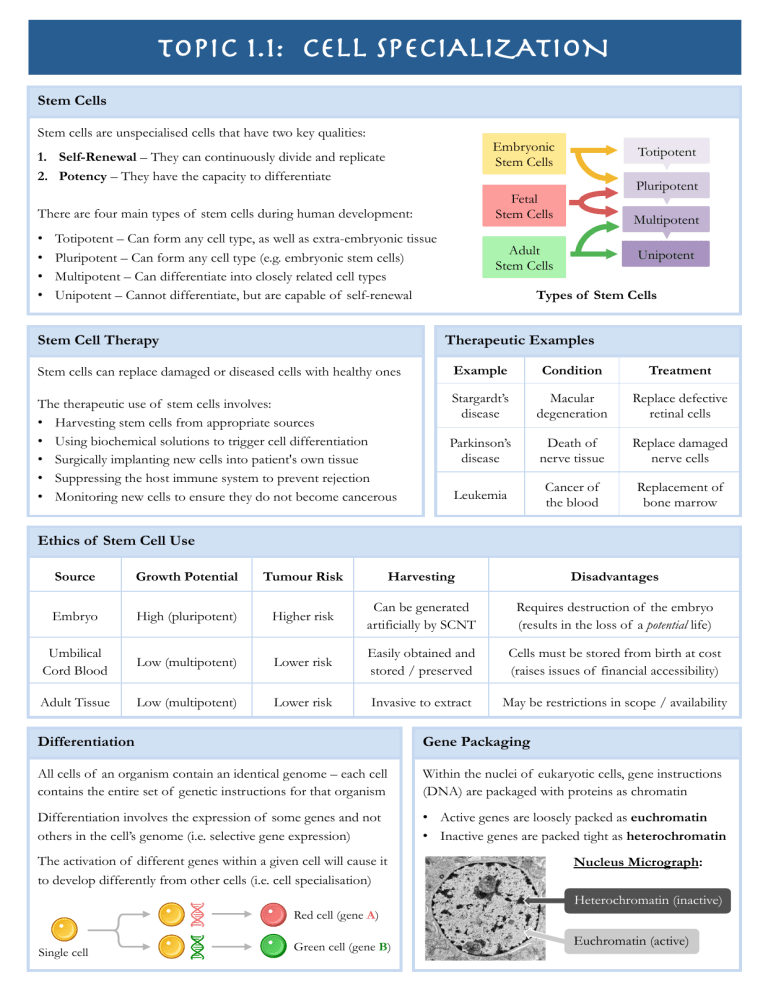
Topic 1.1: Cell SPECIALIZATION Stem Cells Stem cells are unspecialised cells that have two key qualities: Embryonic Stem Cells 1. Self-Renewal – They can continuously divide and replicate 2. Potency – They have the capacity to differentiate Totipotent – Can form any cell type, as well as extra-embryonic tissue Pluripotent – Can form any cell type (e.g. embryonic stem cells) Multipotent – Can differentiate into closely related cell types Unipotent – Cannot differentiate, but are capable of self-renewal Stem Cell Therapy Pluripotent Fetal Stem Cells There are four main types of stem cells during human development: • • • • Totipotent Multipotent Adult Stem Cells Unipotent Types of Stem Cells Therapeutic Examples Stem cells can replace damaged or diseased cells with healthy ones Example Condition Treatment The therapeutic use of stem cells involves: • Harvesting stem cells from appropriate sources • Using biochemical solutions to trigger cell differentiation • Surgically implanting new cells into patient's own tissue • Suppressing the host immune system to prevent rejection • Monitoring new cells to ensure they do not become cancerous Stargardt’s disease Macular degeneration Replace defective retinal cells Parkinson’s disease Death of nerve tissue Replace damaged nerve cells Leukemia Cancer of the blood Replacement of bone marrow Ethics of Stem Cell Use Source Growth Potential Tumour Risk Harvesting Disadvantages Embryo High (pluripotent) Higher risk Can be generated artificially by SCNT Requires destruction of the embryo (results in the loss of a potential life) Umbilical Cord Blood Low (multipotent) Lower risk Easily obtained and stored / preserved Cells must be stored from birth at cost (raises issues of financial accessibility) Adult Tissue Low (multipotent) Lower risk Invasive to extract May be restrictions in scope / availability Differentiation Gene Packaging All cells of an organism contain an identical genome – each cell contains the entire set of genetic instructions for that organism Within the nuclei of eukaryotic cells, gene instructions (DNA) are packaged with proteins as chromatin Differentiation involves the expression of some genes and not others in the cell’s genome (i.e. selective gene expression) • Active genes are loosely packed as euchromatin • Inactive genes are packed tight as heterochromatin The activation of different genes within a given cell will cause it to develop differently from other cells (i.e. cell specialisation) Nucleus Micrograph: Heterochromatin (inactive) Red cell (gene A) Single cell Green cell (gene B) Euchromatin (active)



